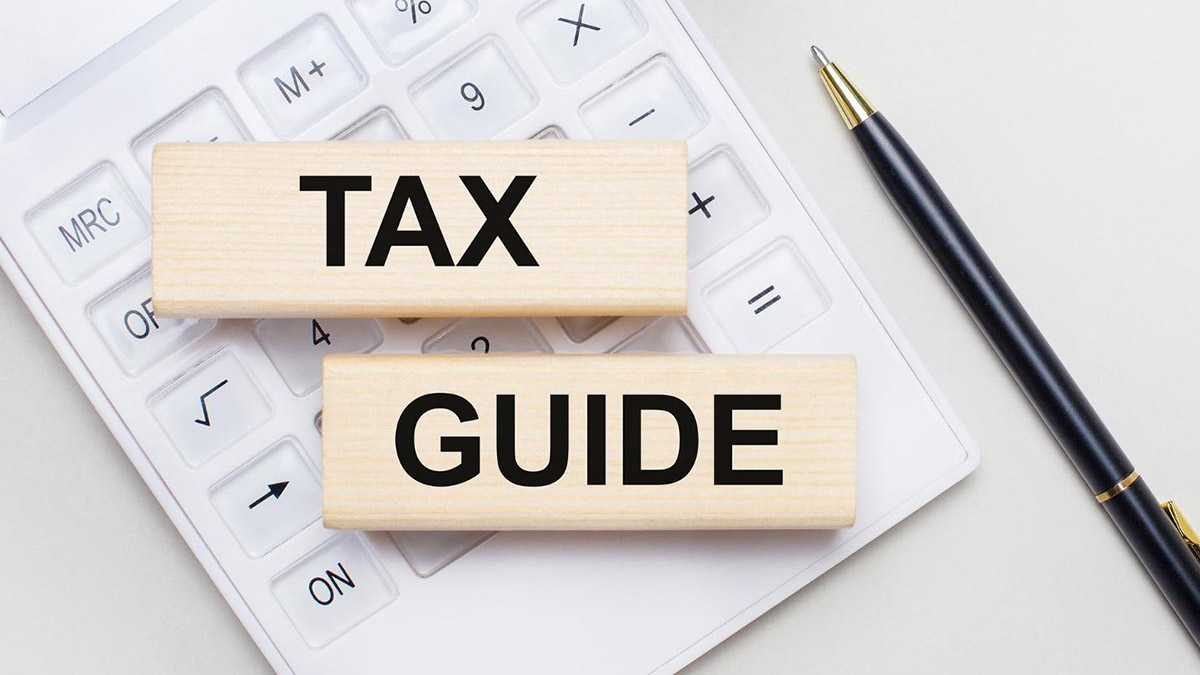

Finance
How To File A Tax Return For 2012
Published: October 29, 2023
Learn how to file your tax return for the year 2012 and stay on top of your personal finance with our helpful guide.
(Many of the links in this article redirect to a specific reviewed product. Your purchase of these products through affiliate links helps to generate commission for LiveWell, at no extra cost. Learn more)
Table of Contents
- Introduction
- Step 1: Gathering necessary documents
- Step 2: Choosing the right tax form
- Step 3: Filling out personal information
- Step 4: Reporting income
- Step 5: Deductions and credits
- Step 6: Calculating taxes owed or refund due
- Step 7: Reviewing and double-checking
- Step 8: Signing and submitting the tax return
- Conclusion
Introduction
Welcome to our comprehensive guide on how to file a tax return for the year 2012. Filing your taxes can seem like a daunting task, especially if you are not familiar with the process. However, with the right information and guidance, it can be a straightforward and manageable task.
Filing a tax return is a requirement for all individuals and businesses who earn income during a given tax year. The purpose of filing a tax return is to report your income to the government and to determine your tax liability. For the year 2012, you will need to file your tax return by the designated deadline, which is typically on or around April 15th of the following year.
It’s important to note that tax laws and regulations may vary from year to year, so it’s crucial to review the specific guidelines for the 2012 tax year. In this guide, we will walk you through the step-by-step process of filing your 2012 tax return, from gathering the necessary documents to submitting the final return.
Whether you are a first-time taxpayer or have filed taxes before, this guide will provide you with the information you need to successfully complete your 2012 tax return. By following the steps outlined in this guide, you can ensure that your tax return is accurate, compliant, and filed on time.
Please note that while we provide general guidance in this article, it is always recommended to consult with a tax professional or seek guidance from the Internal Revenue Service (IRS) for specific questions or concerns regarding your individual tax situation.
Step 1: Gathering necessary documents
Before you begin the process of filing your tax return for the year 2012, it’s important to gather all the necessary documents and information. Having everything organized and readily accessible will make the filing process much smoother. Here are the documents you will need:
- W-2 Forms: These forms are provided by your employer and report your wages, tips, and other compensation earned during the tax year.
- 1099 Forms: If you received income from other sources such as freelance work, investments, or self-employment, you may receive a 1099 form from each payer. These forms report the specific type of income you received.
- Interest and Dividend Statements: If you earned interest or received dividend payments from financial institutions, you will need to gather the relevant statements.
- Mortgage Interest Statement: If you paid mortgage interest on your home, you will need to gather the statement provided by your mortgage lender.
- Receipts for Charitable Donations: If you made any charitable donations during the tax year, gather the receipts or acknowledgments from the charitable organizations.
- Social Security Number (SSN) or Individual Taxpayer Identification Number (ITIN): You will need to provide your SSN or ITIN for yourself, as well as for any dependent listed on your tax return.
- Bank Account Information: If you choose to receive your tax refund through direct deposit, gather your bank account details, including the account number and routing number.
In addition to these documents, it’s also important to gather any other relevant information pertaining to your financial situation for the year 2012. This may include records of medical expenses, educational expenses, business expenses, student loan interest, and any other relevant deductions or credits you intend to claim on your tax return.
By gathering all the necessary documents and having your information in one place, you will be well-prepared to move on to the next step of filing your tax return for 2012.
Step 2: Choosing the right tax form
Once you have gathered all the necessary documents, the next step in filing your tax return for the year 2012 is to determine which tax form to use. The tax form you choose will depend on your individual circumstances and the complexity of your financial situation.
For individuals, there are three main tax forms to choose from:
- Form 1040: This is the standard tax form used by most individuals. It allows you to report all sources of income and claim various deductions and credits.
- Form 1040A: This form is a simplified version of Form 1040 and is suitable for individuals with less complex financial situations. It has certain income and deduction limitations.
- Form 1040EZ: This is the simplest tax form, designed for individuals with very basic financial situations. It has strict income and deduction limitations and cannot be used if you have dependents.
Before selecting a tax form, carefully review the eligibility requirements and restrictions associated with each form. If you’re unsure which form to use, the IRS provides a tool called the Interactive Tax Assistant on their website, which can help you determine the most appropriate form based on your circumstances.
In addition to these individual tax forms, there are also specific forms for businesses, self-employed individuals, and other special situations. If you fall into one of these categories, consult the IRS website or seek guidance from a tax professional to ensure you are using the correct form for your situation.
Once you have chosen the appropriate tax form, you can move on to the next step of filling out your personal information on the form. Take your time and ensure that all information provided is accurate and legible.
Remember, choosing the right tax form is crucial to accurately report your income and claim any applicable deductions and credits. If you have any doubts or questions, consult with a tax professional who can provide personalized guidance based on your unique circumstances.
Step 3: Filling out personal information
Once you have chosen the appropriate tax form for your 2012 tax return, it’s time to fill out your personal information. This step is crucial as it establishes your identity and ensures that your tax return is properly processed by the IRS.
The personal information section typically includes:
- Your full legal name: Provide your full legal name as it appears on your Social Security card or ITIN.
- Social Security Number (SSN) or Individual Taxpayer Identification Number (ITIN): Enter your SSN or ITIN correctly to avoid any processing delays.
- Filing status: Indicate your filing status, which may be single, married filing jointly, married filing separately, head of household, or qualifying widow(er) with dependent child. Choose the appropriate box based on your marital and household situation.
- Address: Enter your current mailing address where you can receive any correspondence from the IRS.
In addition to these basic details, you may be required to provide additional information depending on your specific circumstances. For example, if you have a foreign address or are a non-resident alien, there may be additional forms or information that need to be included.
It’s essential to double-check that all the personal information you provide is accurate and up-to-date. Even a minor error, such as a misspelled name or incorrect SSN, can lead to delays in processing your tax return or potential issues with future tax documents.
When filling out your personal information, be sure to use black ink and write legibly. If you are filling out an electronic form, ensure that the information is entered correctly and matches your official identification records. Keep a copy of your completed tax return for your records.
By carefully filling out your personal information, you can ensure that your tax return is correctly associated with your identity and reduce the risk of any processing or communication issues with the IRS.
Step 4: Reporting income
After completing the personal information section on your 2012 tax return, it’s time to report your income. Reporting your income accurately is vital, as it forms the basis for calculating your tax liability.
When reporting income for the year 2012, consider the following:
- Wages and Salary: If you received a W-2 form from your employer, enter the total income shown on the form. This includes any wages, salaries, and tips you earned.
- Self-Employment Income: If you are self-employed or received income from freelance work, partnerships, or sole proprietorship, you will need to report this income on the appropriate schedule. This may include income from consulting gigs, freelance writing, or any other self-employed activities.
- Interest and Dividends: Report all the interest and dividends earned from investments, bank accounts, and other financial instruments. You should receive 1099 forms detailing these income amounts.
- Rental Income: If you own rental properties and received rental income, report the total amount received from tenants.
- Retirement Income: Include any income received from retirement accounts such as pensions, annuities, and Individual Retirement Accounts (IRAs).
- Unemployment Compensation: If you received unemployment benefits during the year 2012, report the total amount received.
It’s crucial to review your income statements, such as W-2s and 1099s, to ensure that you capture all sources of income accurately. The IRS also receives copies of these statements, so any discrepancies may trigger an audit or delay in the processing of your tax return.
Keep in mind that certain types of income may have specific rules or reporting requirements, such as capital gains on investments or income earned from foreign sources. If you are unsure how to report a particular type of income, refer to the IRS guidelines or consult with a tax professional.
In addition to reporting your income, you may also be eligible to claim deductions and credits to reduce your overall tax liability. These will be covered in the next step of the tax filing process.
By accurately reporting your income, you can ensure that your tax return reflects your financial situation for the year 2012 and avoid any potential penalties or audits due to underreporting or incorrect reporting of income.
Step 5: Deductions and credits
Now that you have reported your income for the year 2012, it’s time to explore the deductions and credits you may be eligible to claim. Deductions and credits can significantly reduce your overall tax liability and potentially result in a higher tax refund or lower amount owed.
Here are some common deductions and credits you may consider:
- Standard Deduction: This is a predetermined amount that can be deducted from your income based on your filing status. It is an alternative to itemizing deductions and is available to most taxpayers. The standard deduction varies depending on your filing status.
- Itemized Deductions: If your eligible expenses exceed the standard deduction, you may choose to itemize your deductions. This includes deductions for medical expenses, state and local taxes, mortgage interest, and charitable contributions.
- Educational Expenses: If you paid for qualified educational expenses, such as tuition, fees, or interest on student loans, you may be eligible for education-related tax credits or deductions, such as the Lifetime Learning Credit or the American Opportunity Credit.
- Child and Dependent Care Credit: If you paid for the care of a child or dependent while you worked, you may be eligible for a tax credit.
- Retirement Contributions: Contributions to retirement accounts, such as Traditional IRAs or 401(k)s, may be eligible for deductions.
- Business Expenses: If you are self-employed or own a small business, you can deduct certain business-related expenses, such as office supplies, travel expenses, and equipment.
It’s important to review the specific qualifications and requirements for each deduction and credit. Some may have income limitations or phase-outs, while others may require additional documentation or specific criteria to be met.
Consider consulting IRS publications or working with a tax professional to determine which deductions and credits are applicable to your situation. They can help you navigate through the complex rules and ensure that you are maximizing your tax savings.
Remember to keep accurate records and maintain documentation of your deductions and credits. This includes receipts, invoices, and any supporting documentation that may be required in the event of an audit.
By taking advantage of eligible deductions and credits, you can potentially reduce your tax liability and keep more money in your pocket.
Step 6: Calculating taxes owed or refund due
After reporting your income and considering deductions and credits, the next step in filing your tax return for the year 2012 is to calculate the amount of taxes you owe or the refund you are entitled to. Properly calculating your tax liability is essential for ensuring accuracy and compliance with the IRS.
To calculate your taxes owed or refund due, follow these steps:
- Subtract Deductions: If you are itemizing deductions, subtract the total amount of your deductions from your adjusted gross income (AGI). If you are taking the standard deduction, skip to the next step.
- Apply Tax Rates: Use the appropriate tax rate schedule for the year 2012 to determine the amount of tax owed on your taxable income. Tax rates are progressive, meaning different portions of your income are taxed at different rates.
- Account for Credits: After calculating your tax owed, subtract any eligible tax credits you qualify for. Tax credits directly reduce your tax liability and are more valuable than deductions.
- Withholdings and Payments: Take into account any taxes withheld from your paychecks throughout the year, as well as any estimated tax payments you made. These payments are typically reported on your W-4 form.
- Compare Taxes Owed and Payments: If your total tax payments exceed your tax owed, you will be entitled to a refund. If your tax owed exceeds your payments, you will need to pay the remaining amount.
It’s important to note that tax laws and rates may change over time, so ensure that you are using the correct tax rate schedule for the 2012 tax year. The IRS provides tax tables and calculators on their website to assist taxpayers in calculating their tax liability accurately.
Keep in mind that this calculation is an estimate, and the final determination will be made by the IRS after they process your tax return. Any discrepancies may result in an adjustment to your refund or tax owed.
Once you have calculated the taxes owed or the refund due, you can move on to the next step of reviewing and double-checking your tax return before submission.
By accurately calculating your taxes owed or refund due, you can ensure that you are fulfilling your tax obligations and avoid any penalties or interest charges resulting from underpayment or miscalculation.
Step 7: Reviewing and double-checking
Before you submit your tax return for the year 2012, it is vital to take the time to review and double-check all the information you have entered. Reviewing your tax return ensures its accuracy and helps avoid potential errors or omissions that could lead to complications with the IRS.
Here are some key areas to focus on during the review process:
- Personal Information: Verify that all of your personal information, including your name, Social Security Number (SSN), and mailing address, is correctly entered. Even a small error in personal information can lead to processing delays or other issues.
- Mathematical Accuracy: Double-check all calculations and ensure that mathematical errors are corrected. Use a calculator or tax software to verify the accuracy of your calculations.
- Income Reporting: Review your reported income, including wages, self-employment income, and any other sources of income. Ensure that all income is accounted for and correctly entered.
- Deductions and Credits: Confirm that you have claimed all eligible deductions and credits accurately. Carefully review the instructions for each deduction or credit to ensure compliance with the IRS guidelines.
- Supporting Documentation: Ensure that you have attached all necessary supporting documentation, such as W-2s, 1099s, receipts, and any other relevant documents that validate your reported income, deductions, and credits.
- Signatures: Make sure that you have signed and dated your tax return. If you are filing a joint return, both you and your spouse must sign.
Take the time to go through each section of your tax return meticulously and compare it to your records and supporting documents. It may be helpful to have someone else review your return as well to catch any potential errors or oversights.
By reviewing and double-checking your tax return, you can ensure the accuracy of the information you are submitting and minimize the chances of any processing issues or audits.
Once you have thoroughly reviewed your tax return and made any necessary corrections, you are ready to move on to the final step of signing and submitting your return to the IRS.
Step 8: Signing and submitting the tax return
After reviewing and double-checking your tax return for the year 2012, it’s time to sign and submit it to the Internal Revenue Service (IRS). Signing your tax return is a declaration that the information provided is accurate and complete to the best of your knowledge.
Here’s how to sign and submit your tax return:
- Electronic Filing: If you choose to e-file your tax return, you can sign it electronically using a Personal Identification Number (PIN). The IRS offers various electronic filing options, including IRS Free File, commercial software, or a tax professional.
- Traditional Paper Filing: If you prefer to file a paper return, sign and date the return manually. If you are filing a joint return, both spouses must sign. Keep a copy of the signed return and any supporting documentation for your records.
- Attach Documentation: If you are filing a paper return, make sure to attach any necessary forms or schedules, as well as copies of W-2s, 1099s, and other relevant documentation specified by the IRS.
- Choose a Filing Method: Determine whether you will mail your paper return or use a designated private delivery service approved by the IRS. Ensure that you have the correct mailing address based on your location and follow the instructions provided by the IRS for mailing your return.
- Pay Any Taxes Owed: If you owe taxes, include a payment for the amount due with your tax return. The IRS provides various payment options, including online payment portals, electronic funds withdrawal, or mailing a check or money order payable to the United States Treasury.
Remember, it’s crucial to meet the deadline for filing your tax return, which is typically on or around April 15th of the following year. If you are unable to file by the deadline, you may request an extension, but keep in mind that any taxes owed must still be paid by the original deadline to avoid penalties and interest.
After submitting your tax return, it’s essential to keep a copy of the signed return and all documentation for your records. This will come in handy in case of future inquiries or audits by the IRS.
By properly signing and submitting your tax return, you fulfill your obligation to report your income and pay any taxes owed. Prompt and accurate filing helps ensure a smooth process with the IRS and provides you with peace of mind regarding your tax affairs for the year 2012.
Conclusion
Congratulations! You have successfully completed the process of filing your tax return for the year 2012. By following the step-by-step guide provided in this article, you have gained a better understanding of the necessary documents, forms, calculations, and submission process involved in filing your taxes.
Filing your tax return accurately and on time is important to ensure compliance with tax laws and avoid penalties or other complications with the IRS. Taking the time to gather the necessary documents, choose the correct tax form, fill out personal information accurately, report income correctly, claim eligible deductions and credits, review and double-check your return, and sign and submit your return demonstrates your commitment to fulfilling your tax obligations.
Although we have provided a comprehensive overview of the filing process for the year 2012, it is important to note that tax laws and regulations change over time. Therefore, it is always a good idea to stay informed about any updates or changes for the specific tax year you are filing. The IRS website, tax professionals, and other reliable sources can provide the most up-to-date information and guidance.
Remember, filing your tax return is not just a legal requirement, but also an opportunity to take advantage of deductions and credits that can reduce your tax liability or result in a tax refund. Paying close attention to detail and seeking professional advice when needed can help ensure that you make the most of your tax return filing.
Thank you for using our comprehensive guide to file your tax return for the year 2012. We hope this information has been helpful, and we wish you success in your future tax filing endeavors.














